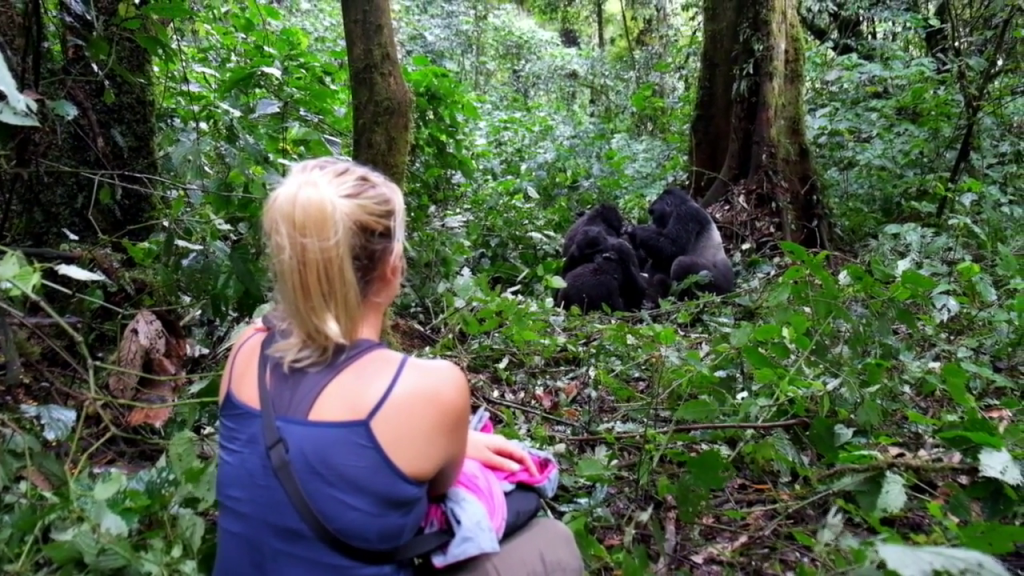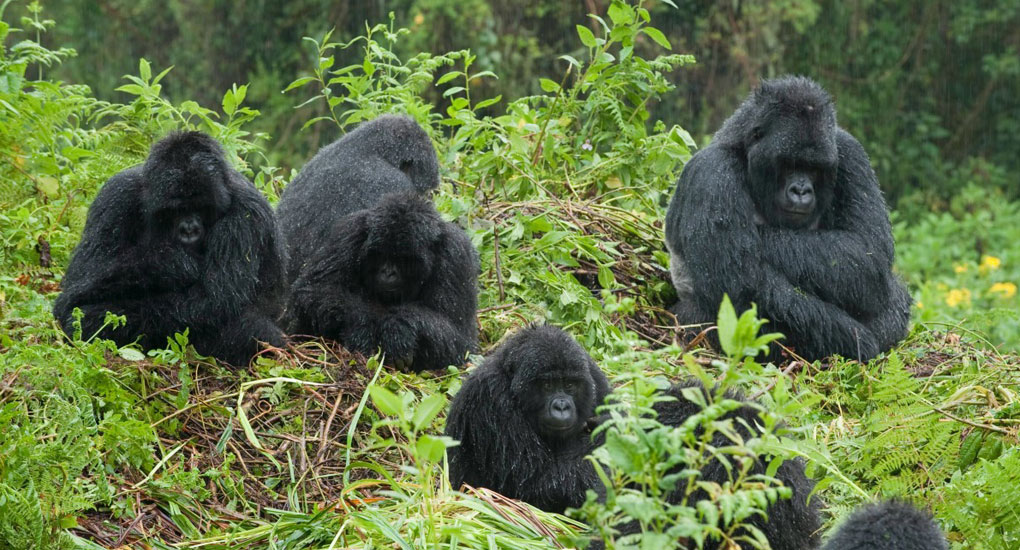Do Mountain Gorillas Flight Regularly?
Mountain gorillas have sharp canine teeth and immense strength which makes them very dangerous rivals when in a fighting mood. For this reason, most differences of opinion within the gorilla families and with strangers are not sorted by fighting but rather displaying as well as threatening behavior patterns that won’t get counterparts physically injured. Mountain gorillas are known for their display behavior that usually culminates into chest-beating, feet stamping, and deafening hooting. Anyone who has witnessed the chest-beating behavior among silverbacks will agree that it is one of the most breathtaking and impressive sights during gorilla safaris.
Also, life-threatening aggression is uncommon within stable gorilla families, although when two families meet, the dominant silverbacks at times participate in fights that cause death. This is mainly attributed to their sharp canine teeth that bring about deep and gaping injuries leading to serious infections. In the larger region of African tropical rainforests, mountain gorillas and chimpanzees share their natural habitats in addition to even eating some of the same plant species hence making them competitors. The competition is even intense during the fruit ripening season as both Great Apes species are drawn to the same tree species.

Gorilla trekking in Uganda
Also, their encounters sometimes lead into fatalities. The two most popular incidences of such kind have been recorded in Gabon where the more populous chimpanzees drove away the gorillas, even to a point of killing an infant. On the reasons why mountain gorillas fight, they include;
To protect their families from lone silverbacks
The highest cases of fights among mountain gorillas are attributed to the need to provide protection from wild and lone silverbacks who are trying to grab members from other gorilla families to establish their own families.
When trying to break off from their natal families
Regular fights in mountain gorilla families occur when silverbacks are trying to break off from their natal families to form their own families. Authority always prevails in gorilla families whereby it is the responsibility of dominant silverbacks to make decisions and enjoy all privileges (like mating females and eating first) but this comes at a great cost. He is responsible for protecting the gorilla family, which sometimes involves fighting other silverbacks.

Gorilla Trekking
It should be noted that when a male gorilla grows to about 13 years, he is now mature enough for sexual activity and yet not everyone is entitled to mating within the gorilla family. For this reason, the only thing to do is fight for dominance or leave to form another family. Before leaving, the subordinate silverback will either try convincing some of the family members to join him in forming another family or simply fight to overthrow the dominant silverback (who is sometimes his father) and become the leader.
Fighting for female gorillas
Other mountain gorilla fights are attributed to females, as subordinate silverbacks also desire to mate, something they aren’t allowed to do. This causes fights and sometimes leads to fatalities. Unlike how they are always portrayed, it is worth noting that mountain gorillas are generally calm and peaceful creatures that only attach when threatened.
The endangered mountain gorillas live and can be trekked in only four National Parks that including Bwindi Impenetrable and Mgahinga Gorilla National Parks in Uganda, Virunga National Park within the Democratic Republic of Congo, and Volcanoes National Park in Rwanda. The Eastern lowland gorillas live in a number of Protected Areas within the Eastern Democratic Republic of Congo but are mainly trekked within Kahuzi-Biega National Park. These Giant Apes are trekked all year round, although the dry months are the peak season. This is because rainfall levels are low thus forest trails are drier and more comfortable to walk through.
